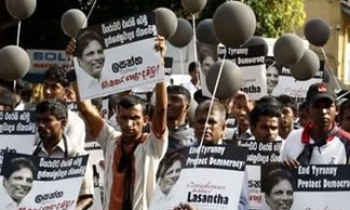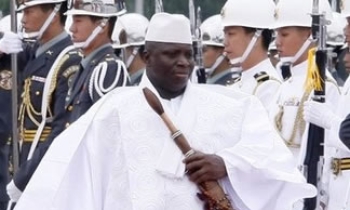THE bylines and photo credits in today's Travel section look no different than those throughout the newspaper. Yet nonstaff contributors produced every major feature article and almost all the photographs in the section. Or consider a typical Escapes section. About 80 percent of its content comes from outside contributors.
These contributors, who are commonly known as freelancers or stringers, provide a hefty chunk of the content for the newer and expanded sections in The New York Times. They're essentially independent contractors, often with other jobs and commitments, usually remote from the newsroom culture.
The freelancers make valuable contributions to The Times. Editors can quickly tap the expertise of a freelancer who usually writes for specialized publications, or get one to the scene of breaking news hundreds of miles from any staff writer. And many well-known writers and authors often are available only on a freelance basis.
The paper's high aspirations for the freelance corps is clear in the opening sentences of its formal guidelines for them: "Times readers apply exacting standards to the entire paper. They do not distinguish between staff written articles and those written by outsiders." But perhaps for now, my fellow readers, you should.
Monitoring and maintaining the paper's ethical and reporting standards among the growing and far-flung army of freelancers is a crucial and complex task. Two years ago, The Times acknowledged that it needed to do a better job of checking out new freelancers and requiring them to pay more attention to the paper's ethical and reporting standards. But the goals are proving tough to achieve.
While there's no concrete way to compare the overall quality of the work of freelancers with staffers, several editors at the paper whom I talked to say they spend more time getting the average freelance article ready for publication. The freelancers range from young journalists eager for exposure and experience to talented and acclaimed veterans - just as there's a range of talent across the some 1,200 employees on the newsroom staff.
Most of The Times's freelancers are writers, but the ranks of outside contributors include photographers and illustrators. They typically are paid by the article, photograph or illustration. A few more-experienced freelancers or former staffers have formal agreements that require more consistent contributions. (Freelancers abroad exist in a distinct world that I intend to explore in a future column.)
The increased spending for freelance writers is a sensitive subject at The Times. What was the percentage increase from 2000 to 2004? "Proprietary," was the word from Bill Keller, the executive editor, who would say only that it has increased "significantly." During that period, the regular staff has grown about 3 percent - roughly the same as the increase in space devoted to news content, according to William E. Schmidt, an assistant managing editor.
The greater dependence on freelancers has come as The Times has added new sections like Thursday Styles and enhanced other parts of the paper with more graphics and photographs, Mr. Schmidt noted. The increased spending also reflects, in part, higher rates the paper found itself paying after a 2001 court decision required broadening the standard contracts to include electronic use.
Even with higher freelance pay, of course, the absence of employee benefits for outside contributors makes them financially attractive compared with full-time staffers. That's why freelancers can be an important consideration when any newspaper, not just The Times, seeks to innovate or expand amid increased financial constraints.
The committee created to review the paper's ethics and other policies in the wake of the Jayson Blair ordeal expressed concern about the freelance process. "The hiring of stringers has been haphazard, ranging from a thorough evaluation process to the friend-of-a-friend-of-a-friend method," the committee reported in July 2003. It said freelancers "should sign a statement that they have read and fully understand our ethics policy." So language was added to the standard contract for freelancers that commits them to comply with all the policies in the paper's 54-page Ethical Journalism handbook, which is also online.
A new electronic freelance administration system will include a process requiring all freelancers to respond to a set of pointed questions about possible conflicts of interest when they sign a contract. The new system, which began its rollout last week, initially will link freelance contracts to assignments and payments. The Times expects to incorporate the conflict-of-interest questions, which are ready for use, into the electronic system "within a few months," according to Mr. Schmidt.
The risks of a freelance operation that depends too much on harried editors are easily apparent. Random checks with eight new and existing freelancers in recent days found none of them had bothered to look at the ethical guidelines to which they had pledged compliance. Also, none reported that the editor who had recruited them called their attention to the guidelines. (I decided not to name the freelancers in this column.)
"I can't say anybody told me anything," one new contributor told me. When another new freelancer received his contract, he recalled, the editor "just told me to hurry up and fax it back."
One of the freelancers with several Times articles to his credit recently used a pejorative quotation from an anonymous source that ran afoul of one of The Times's guidelines - as was duly noted in a subsequent editors' note in the paper. "The Times's policy does not permit the granting of anonymity to confidential news sources 'as cover for a personal or partisan attack,' " the note said.
The freelancer acknowledged to me, "I should have known the rules. Technically, I should have gone to the Web and read the rules."
Failing to detect freelancer conflicts of interest remains an inherent risk - given that outside contributors often have other jobs or sources of income.
One of the new freelancers who just turned in his first article - about a drug-resistant strain of staphylococcus infection - recounted his recruitment for me. When he pitched the idea to the health editor for the Science Times section, the editor carefully asked if he had "any advocacy ties." He had explained he was on the staff of Housing Works, a New York-based organization that operates thrift shops to help it assist homeless people with H.I.V. or AIDS. After checking with the paper's standards editor, the assignment editor told him he had been cleared to do the article.
When I did a couple of basic Web searches, I quickly discovered that the freelancer had been publicly involved in advocacy efforts on AIDS issues at Housing Works. I brought this to the attention of the assigning editor and Allan M. Siegal, the standards editor, on Tuesday. The next day, Mr. Siegal decided the article would not be published. Doing a personal post-mortem in an e-mail message to me, the assigning editor suggested she should have learned more about Housing Works so she could have provided the standards editor with "enough information for him to make a careful decision."
Advocacy conflicts come in all different forms. In May, The Times published an article about a campus demonstration from a freelancer who was a Princeton University student. After publication, The Times discovered that the contributor had participated in the protest she wrote about and barred her from further freelancing.
The resulting editors' note explained that "The Times does not ordinarily allow its writers to cover events in which they have taken part, and the paper's staff and contributors are not permitted to join rallies or demonstrations on divisive issues. The writer says she was unaware of these policies." Looking back, the deputy education editor who handled the article told me he had assumed signing the Times contract meant the freelancer had read the guidelines.
Given the risks inherent in the freelance process, I urge Mr. Keller and Mr. Schmidt to keep the pressure on to make sure the ethics questionnaire process is indeed fully integrated into the elaborate new electronic system by year-end. My brief look into the world of freelancing suggests that pushing the questionnaire in front of all freelancers will ward off many problems.
And I can't avoid the conclusion that it's unlikely The Times will ever be able to give freelancers the same oversight it gives staffers. So readers deserve to know whether a freelancer or a staffer provides the content. The Times's biggest competitors make the distinction for their readers. The Times should consider trying to find a way to do it, too.









